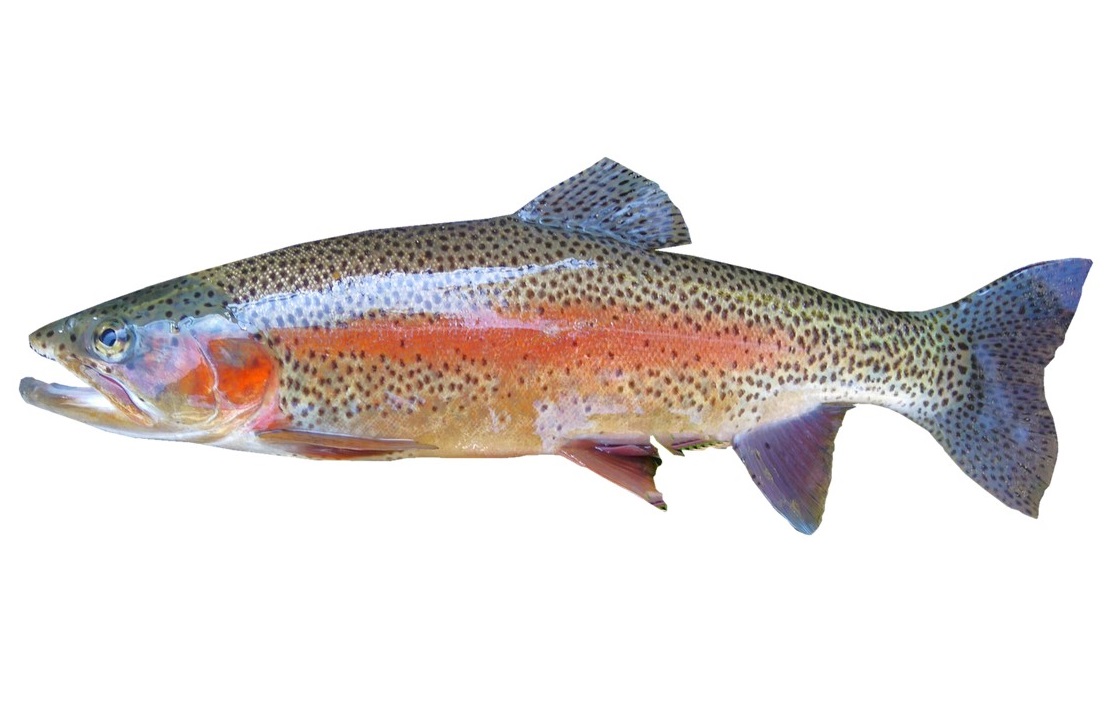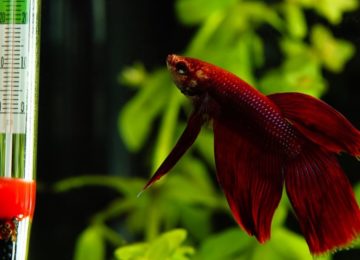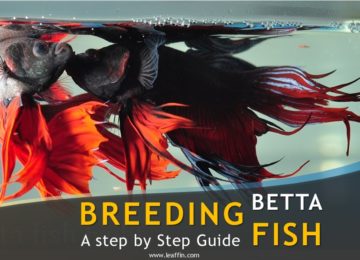The rainbow trout is popular sportfish and recognized as a tasty, nutritious dinner for all diets. This easy to rear fish can be cultured to grow plants in aquaponics.
This hardiest type of trout is easier to grow for farming purposes and much less maintenance for plant growing purposes. They are ideal to use for aquaponic systems in winter and temperate/Nordic area.
Rainbow trout have long, thin and blue-green body with no scales, a red stripe on the sides and spotted on top. They live in different habitats and have a wide range of varying colors and patterns, which serve as a camouflage when they migrate to different environment.
| Name | Rainbow trout |
| Scientific Name: | Oncorhynchus mykiss |
| Family: | Salmonidae |
| Optimal water temperature: | 1416°C (57-60°F) |
| Vital temperature range: | 1018°C (50-64°F) |
| Dissolved Oxygen: | > 6 mg/l |
| pH: | 6.5-8 |
| Unionized Ammonia: | < 0.01 mg/l |
| Nitrite: | < 0.8 mg/l |
| Hardness: | 50 - 200ppm |
| Diet: | Carnivore: needs high 40-50% protein |
| Growth Rate: | 1000 grams in 1416 months |
| Average Adult Size: | 12 kg (27 lbs) |
| Lifespan: | 7 - 11 years |
| Habitat: | Cold Fresh water |
| Distribution: | Pacific Ocean in Asia and North America. |
Rainbow trout are a cold water species of salmonid which is found and reared all around the world. You will find them in every continent except Antarctica. They are also probably the most popular freshwater sporting fish. They are also raised in aquaculture systems, sea cages, flow-through tanks and ponds in the USA, Canada, Europe, parts of South America (Chile, Peru), tropical and subtropical upland areas of Africa and Asia and Australia.
Uses
Rainbow trout are widely used around the world for fish farming and restocking of angling fisheries. Rainbow trout is lower in fat, good in taste, high in nutrition and offer a wide range of variety to recipes and menus. They are extensively farmed as a food fish for sale as a fresh, fresh-frozen or smoked product to restaurants, supermarkets or consumers.
They are a fast-growing and crowding-tolerant fish, making them well suited to captive breeding. When used for aquaculture meat production, the fish are purchased as fry and reared to marketable size or are hatched onsite in tanks from eggs and sperm obtained from broodstock. When reared for angling, most are stocked at a harvestable size for rapid removal either to public waters or private ponds. Stocking densities and average weights are dictated by the economics of the angling demand.
Feed & Diet
The freshwater forms feed on invertebrates and fish, but reared strains do very well on grain-based artificial diets. The diet of young trout consists of various terrestrial and aquatic insects and their larvae as well as fish and other vertebrates.
Due to the widespread use of all-female or sterile triploid strains, spawning is uncommon or nonexistent in some commercial (sterile-hybrid) strains. Trout need a diet with comparatively higher protein percentage providing high nitrogen concentration from the fish feed. This not only favors a balanced aquaponic unit while allowing more plants and enhancing the growth.
Water quality
Rainbow trout evolved in mountain streams. Unlike tilapia, trout require cold, well-oxygenated waters. Like most salmonid species, dissolved oxygen levels should never fall below 5.0 ppm. Since dissolved oxygen in water is proportional to temperature, a few air stones need to be added as the temperature rises. To successfully raise trout in aquaponics, regular monitoring and backup pumps are needed to maintain the water quality.
They grow best in water temperature maintained at about 59°F. In well-aerated water, they are capable of surviving in waters as high as 85°F. However, with temperatures increase above 70°F (21 °C), their growth rates significantly decrease and may not be able to properly utilize DO even if available. The refer neutral pH with an acceptable range of 6.7 to 8.2. Spawning begins in early spring as water temperatures approach 50°F. Eggs numbers may be as high as 12,000 per female.
Although trout do not handle dirty water well, they are very tolerance to salinity. Many varieties can thrive in freshwater, brackish water, and marine environments.
Challenges
Trout not only require cool temperatures, which can be hard to provide in a small tank during summer but water quality also needs to be top-notch.
To minimize water temperature fluctuations, You may need a larger fish tank to keep trout at home in the backyard. In summer, insulation and a water chiller are essential to maintaining the temperature range for this cold water fish.
The vegetable growth in the aquaponics system is likely to be poor at the temperatures preferred by this species (11- 17°C). It can be difficult to balance and cater the need of warm water of plants and colder water for fish.
Since, You already know what pH, temperature and size of tank you need to keep your trout happy. Keep the fish container separate from where you are growing plants and use a pump to circulate the water. If the temperature outside is more on the warmer side, then keep your plants outdoor and trout indoor. If it is cooler outside, grow your plants indoors using grow lights.
Their excellent flavor may be worth the time investment needed to learn how to raise them successfully. You should also be aware that you’ll be saving money on water costs and nutrients while helping the environment and getting better quality crops!




Stocking density?
Is surface area more important than volume?
12k gallons with 160 sqft or surface area
And how many 2-3lb fish would you suggest?
Water temp kept at 55-60
High oxygen levels, clean water
Rainbow Trout are not “well-suited to captive breeding”